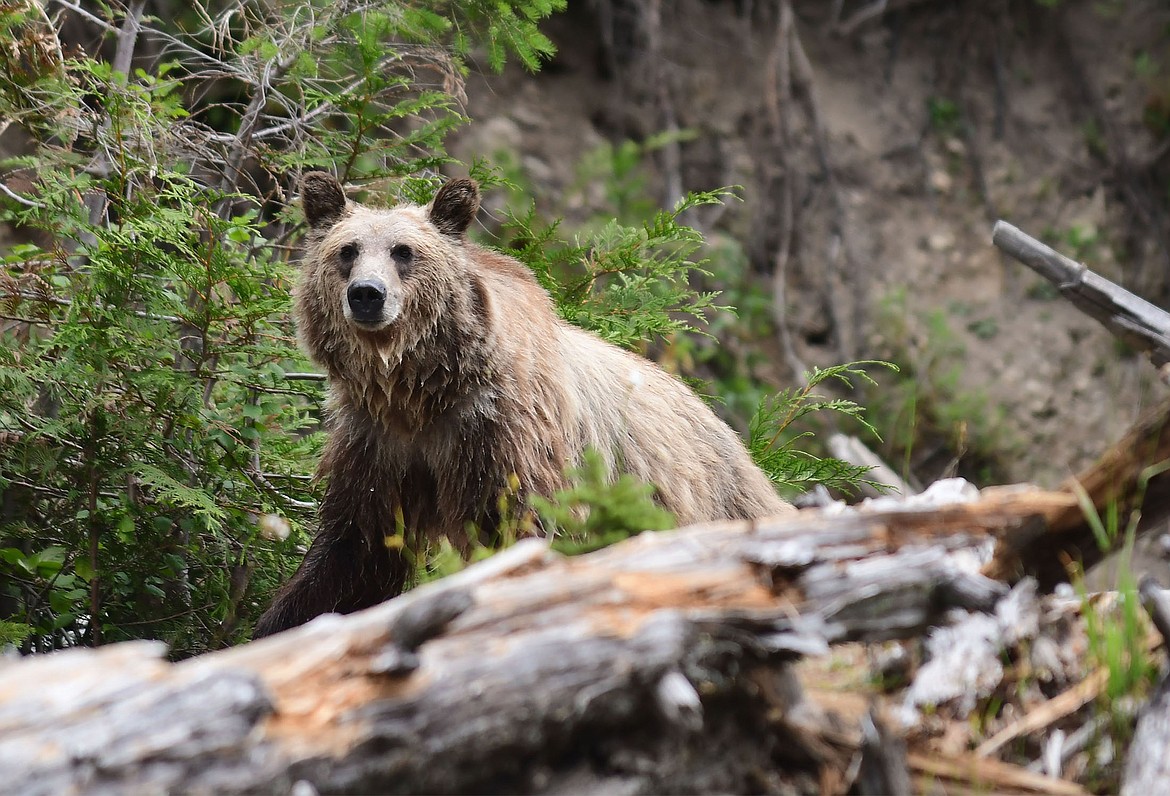State grizzly bear plan has little tolerance for wayward bears
Hungry Horse News | UPDATED 2 years AGO
By CHRIS PETERSON
Hungry Horse News
Montana Fish Wildlife and Parks recently released a draft environmental impact statement for the management of grizzly bears if they are delisted from the Endangered Species Act. Grizzlies have been listed as a threatened species since 1975.
While many feel the bear is recovered, recent court rulings have kept them on the list until bears from populations in Yellowstone and northern Montana can show some connectivity.
The plan calls for a “conservative” hunt of grizzly bears, though tolerance for bears outside of recovery zones and where they may not interconnect with other species looks to be limited under the plan.
“Where connectivity with a population core is not likely, grizzly bear presence would not be an objective, and individual bears would be tolerated only to the extent that they do not conflict with human safety or human uses of the landscape,” the draft EIS notes.
Grizzlies have increasingly been migrating east of the Rocky Mountains onto the plains, where they run afoul with ranchers and farmers.
Local populations of bears — those in the Northern Continental Divide Ecosystem, would be managed to assure a population of at least 800 bears.
“FWP would continue to manage mortalities from all sources to support an estimated probability of at least 90% that the grizzly bear population within the NCDE demographic monitoring area remains above 800 bears. This means the population is likely be about 1,000 bears, at least, in the NCDE DMA,” the plan claims.
But about a third of the grizzlies in the NCDE already live in Glacier National Park, where they aren’t hunted and rarely removed because of management reasons anyway.
The bears that get into trouble typically get into neighborhoods or have conflicts with hunters and campers outside of the national park.
One notable change is the movement of conflict bears. Typically, bears that get into trouble are moved within their home geographical area.
For example, if a bear gets into trouble in Columbia Falls, it might get moved to the South Fork.
Under this plan, bears could conceivably moved even farther away.
“Conflict-involved bears would be moved to sites where the probability of additional conflict is low. Since 2009, 84% of destinations have been in FWP Region 1 (72% have been in Flathead County). However, if a non-conflict bear (non-target or preemptively trapped) animal is captured, FWP would consider moving it to an area outside of that recovery zone where connectivity is an objective and a Commission-approved release site exists,” the plan notes.
The plan would continue to use bear managers across western Montana in Anaconda, Bozeman, Chouteau, Conrad, Hamilton, Kalispell, Libby, Missoula, and Red Lodge.
The EIS notes that about half of Montanans surveyed support a grizzly bear hunt to some degree.
“About 49% of Montanans support enough hunting to manage grizzly bear population size; 30% support a very limited season that would not affect the population size; and 4% support as much grizzly bear hunting as possible. About 17% believe grizzly bears should never be hunted in Montana,” The EIS states.
Of that 17% however, is Montana’s Native American tribes, who have previously held protests when grizzly bear hunts were proposed a few years ago.
Grizzly bear hunting was stopped in Montana is 1991 as the result of a lawsuit. Even though bears were listed in 1975, hunts continued until then.
Montana has petitioned the U.S. Fish and Wildlife Service to delist grizzly bears in the Northern Continental Divide Ecosystem and supports Wyoming’s petition to delist grizzly bears in the Greater Yellowstone ecosystem, where they have surpassed recovery goals. Other recovery areas in Montana include the Cabinet-Yaak and Bitterroot ecosystems.
The Cabinet-Yaak ecosystem is supplanted by grizzly bear reintroductions from bears taken from the NCDE. There’s about 50 to 60 bears in that area.
The Bitterroot could support about 300 bears, but currently does not appear to have a sustaining population, though some bears have moved back and forth into the ecosystem.
To review the plan and comment, go online to https://fwp.mt.gov/aboutfwp/public-comment-opportunities/grizzly-bear-management-plan. To comment by mail, send to Wildlife Division, Grizzly Bear Plan and EIS, P.O. Box 200701, Helena, MT 59620. Comments can also be emailed to fwpwld@mt.gov.
Comments are due by Feb. 4.


